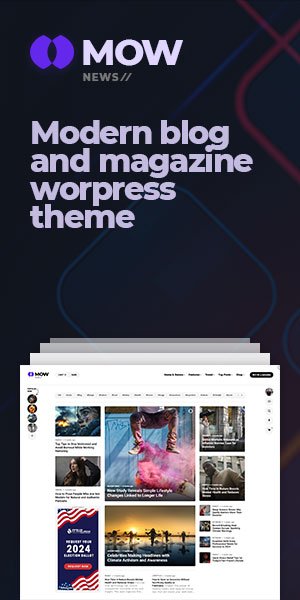Now Reading: How Integrated Marketing Communication Builds Strong Employer Brands
-
01
How Integrated Marketing Communication Builds Strong Employer Brands
How Integrated Marketing Communication Builds Strong Employer Brands
By Yasiru Bhanuka, Business Development Manager, Alakamandawa Plantation (Pvt) Ltd
It started with a meeting that almost everyone had forgotten about. The HR team was planning an employee referral campaign, while the marketing team was preparing a social media push for the company’s latest product. Both teams used the same logo, but their messages couldn’t have been different. One talked about “innovation,” the other about “stability.”
The result? Confusion among both employees and potential recruits.
That small disconnect inspired the focus of our research on Integrated Marketing Communication (IMC) and how collaboration between HR and Marketing can strengthen employer branding
The Core Finding: Consistency Creates Trust
In our study, we examined how IMC principles once reserved for external marketing can be applied internally to shape employee perception and culture. We analyzed organizations that coordinate messages across advertising, recruitment, internal communication, and leadership narratives. As per our research findings, consistency across all communication touchpoints significantly improves how employees perceive credibility and alignment. When HR and marketing communicate in silos, engagement drops; when they collaborate, culture becomes visible.
In marketing, IMC ensures that every advertisement, post, and campaign speaks with one voice. The same logic applies to HR. Employees experience a brand through multiple “channels” onboarding, feedback platforms, recognition programs, and even informal conversations. Our research showed that when these experiences carry a consistent tone and story, employee trust and identification rise sharply.
People want to work where the promise outside matches reality inside. If job ads celebrate creativity, but the workplace discourages new ideas, no number of perks can save engagement. For HR, adopting IMC principles means auditing every touchpoint from recruitment materials to leadership speeches and ensuring they tell one coherent story about who the organization really is.
Breaking Down the Silos
One insight from our interviews was striking: many HR teams said they felt “out of sync” with marketing. The two departments often speak to the same audience at different stages of the relationship. Marketing attracts customers; HR attracts employees. Yet their tone, timing, and tools rarely overlap. Our findings suggest that when HR and marketing plan together, employer branding becomes authentic. Joint campaigns where employees appear in brand storytelling or social content strengthen both reputation and retention.
For example, a company’s social post celebrating teamwork shouldn’t end at the marketing page; it should echo through HR’s onboarding materials and recognition systems. That’s what IMC does; it turns scattered efforts into a continuous conversation. In consumer marketing, every customer interaction packaging, service, and tone is part of the brand. In HR, every policy and process communicates values too. Our research found that employees interpret communication not only through emails or posters but through experience. Delayed feedback, unclear recognition, or inconsistent leadership behavior all act as “off brand messages.” This is why HR needs a communication mindset. Employer branding isn’t just about career pages; it’s about day to day credibility. Marketing builds awareness, but HR sustains belief.
Measuring the Impact
One of the most practical aspects of our research was identifying how organizations can evaluate IMC’s success in HR. We discovered three key metrics that correlate strongly with consistent internal external communication:
- Engagement Index: Employees in firms with aligned messaging report higher emotional connection to company goals.
- Referral Rate: Workers who trust the brand narrative are twice as likely to recommend it to peers.
- Retention: Authentic communication reduces turnover triggered by unmet expectations.
These findings mirror marketing outcomes of loyalty, advocacy, and long term relationship building, proving that IMC works as powerfully inside organizations as it does outside. While the benefits were clear, our research also highlighted risks. Over marketing the employer brand without matching internal reality can backfire. Employees are quick to notice when slogans don’t reflect on culture. Therefore, the partnership between HR and marketing must be transparent in two ways. HR provides the authentic story of real experiences; real people and marketing refine how it’s told. Together, they ensure that communication remains both creative and credible.
Another challenge is measuring sentiment in a nuanced way. Quantitative metrics show reach, but qualitative feedback reveals meaning. Here, HR can apply marketing listening tools for surveys, social listening software, and even NLP sentiment analysis to continuously gauge cultural tone. As per our findings, the HR function of the future will look a lot like a strategic communication hub. Skills once considered “marketing tools” storytelling, campaign design, and data analytics are becoming essential in people management. When HR leaders learn to think like marketers, they don’t just fill vacancies; they craft experiences. Recruitment becomes an attraction, onboarding becomes brand immersion, and internal communication becomes cultural reinforcement. The outcome is a stronger psychological contract: employees don’t just work for the brand they live it.
A New Kind of Collaboration
Reflecting on our research, one message stands out: culture and communication are inseparable. IMC gives HR the framework to make that connection explicit. Imagine a company where marketing shares campaign data with HR, and HR shares engagement data with marketing. Together they can tell one story a story that resonates with customers, candidates, and current employees alike. That’s not just collaboration; it’s integration in the truest sense. What began as a marketing project turned into a lesson about people. Data and design matter, but trust is what truly shapes perception. As per our research findings, when HR and marketing align their voices, organizations stop talking to people and start communicating with them. Integrated communication builds more awareness than it builds belonging. And in today’s talent landscape, belonging is the most powerful brand message of all.









